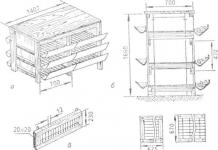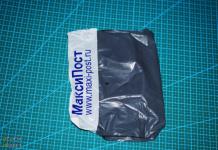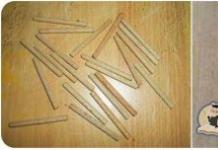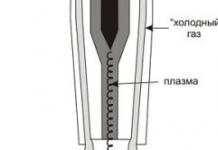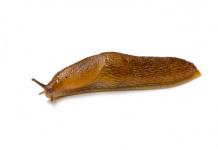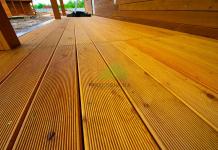Hybrid zucchini. Agrotechnics of cultivation
Hello dear friends
Zucchini is a common bush variety of pumpkin, only without pronounced lashes, characterized by precocity and multiplicity. Proper agricultural technology for growing zucchini begins with preparation best conditions for a plant. For planting a crop, a sunny, wind-protected place is necessary, since productive fruit set occurs at a temperature of at least + 22`C.
Seedlings and adult plants cannot stand frost, even slight temperature drops can ruin the expected harvest. Good predecessors before placing zucchini are the legume and cruciferous family, daikon and radish.
What does the landowner expect from squash bushes? A high-quality and productive crop, the fruits of which are tasty, versatile in food consumption, suitable for storage and, of course, are slightly susceptible to fungal diseases and resistant to weather vagaries. Accordingly, only F1 hybrid zucchini meet such considerable requirements, the cultivation of which already halves the gardener's labor worries, in comparison with the cultivation of conventional varieties that have survived to this day from the selection of farmers in the USSR.
The expected yield quality in full and even more will be provided by zucchini hybrids: Iskander, Aral, Diamant, Scilli, Alba, Amjad, Kavili, Mary Gold, Kora, Nemo, Fora and a promising zucchini variety from Enza Zaden - Leila.
Agrotechnics for growing hybrid zucchini
In the autumn, soil is prepared for the future cultivation of zucchini, as usual: compost is added for digging or simply chopped hay, green manure cutting, non-coniferous sawdust, superphosphate with ash is added and everything is mixed. If the soil is acidic, then dolomite flour or powdered chalk is added to the ash. In the spring, it is not necessary to dig up the site, it is enough to fluff up the place of cultivation with a rake and carry out abundant watering of the planting holes with a combined solution of humic fertilizer with azophos or ammonium nitrate, about a week before placing the seeds in them.
In May or early June, seeds of zucchini hybrids are planted in prepared well-groomed soil no more than 3 pieces per square meter. m, deepening no more than 5 cm, watered and slightly compacted planting holes. After they are mulched with peat chips, hay cut or wood chips of neutral species. Seeds are not soaked, since the hybrids are always treated and covered with several layers of nutrient-fungicidal shell, washing off of which outside the soil only hinders the initial development, normal vegetation and deprives the seed germ of nutrition with protection from fungal infections.
Agrotechnics for growing zucchini seedlings
Planting zucchini hybrids through seedlings is less common and is mainly used in the northern regions. Greenhouse or greenhouse cultivation of pumpkin crops is unproductive and unprofitable, since it requires forced pollination, tight humidity control and regular formation of bushes.
After sowing, the soil is periodically loosened, the seedlings are thinned out, fed with solutions of mineral and organic compounds, weeds are removed and generally accepted prevention from diseases and pests is carried out. If the mulching of the bushes is not carried out, then it is advisable to loosen the bushes after rain or irrigation so that the soil crust does not layer. When loosening, moisture is retained in the soil and the necessary air enters the roots. During the growing season of zucchini, it is desirable to carry out three plentiful top dressings: during the formation of seedlings, during flowering and the beginning of fruiting.
An important point agricultural techniques for growing zucchini is the correct formation of the plant. When forming a bush, zucchini is not pinched like a pumpkin, and at the beginning of flowering, several big leaves from the middle of the bush: this way the plant is well lit by the sun, ventilated, the appearance of rot is prevented and the access of pollinating insects to the opening flowers is facilitated.
ayatskov1.ru
Zucchini - description and benefits
A plant from the family of ordinary pumpkins. Country of origin - Mexico.
Large sheets arranged on oblong petioles, have five pointed ends. The color is green, from pale to darker tones, sometimes with light "blots". Prickly to the touch.
Root system surface type, widely spread. Lateral and adnexal branches depart from the main root.
Flowers zucchini are heterosexual, but grow on a bush nearby. The color is yellow, the size is not small, the shape resembles a bell.
Fruit most often elongated, may be somewhat curved. You can grow different colors: green or yellow, sometimes black or striped. The pulp of young zucchini is tender, tasty and healthy, easily digestible.
Zucchini has a low calorie content (about 27 kcal per 100 g), rich in potassium, iron and a whole set of vitamins. Great for diets for weight loss, people recovering from illness. It is unforgivable to ignore such a vegetable when growing on your own plot.
For zucchini grown in open ground, it is worth choosing a well-lit slope without wind, preferably in the south or south-west of the land, away from groundwater.
Predecessors - good and bad
When planting zucchini in open ground, it is very important to consider what was grown in this place last season.
Any "brothers" - cucumbers, squash, pumpkins - are bad predecessors for zucchini. They took nutrients from the soil of the same level where they grow zucchini, which means it is already depleted. Pathogenic microbes remained in the same layer, which always gather by the end of the season after a certain culture. Therefore, with the new cultivation of pumpkin (zucchini) in the ground, there will be practically no useful substances for plants. But diseases will gladly switch to a plant species that is familiar to them.
Good predecessors of zucchini are: radishes, carrots, tomatoes, potatoes, parsley. Best of all - legumes, cabbage, onions and garlic. Not bad to plant green manure before growing zucchini.
Preparation of seeds and planting material
Zucchini can be planted with seeds or seedlings. Both methods require the preparation of planting material.
ovosheved.ru
Planting zucchini
| Light | |
| pH soil acidity | ground water. |
| Watering | |
| Preparing for landing | seed treatment |
| fertilizers | weeds |
| Good Predecessors | |
| Bad predecessors | |
| Landing time | seedlings |
| Landing pattern | ash. |
| planting depth | |
| Problems | Zucchini diseases Zucchini pests protect their. |
| Care | weeding |
| Zucchini varieties |
The zucchini is famous for its useful properties and unpretentiousness. Nutritionists respect it for its low calorie content and a whole range of vitamins and organic acids. 100 grams of the product contains only 27 kilocalories!
So, for those who are not in the know: zucchini is an annual herbaceous vegetable plant belonging to the gourd family. Zucchini are green, yellow and white. We'll talk about this in more detail below.
Zucchini is photophilous and thermophilic, and therefore it should be planted on the sunny side. Do not forget this important feature: the more light this plant receives, the faster it will bring the harvest, and the more abundant it will be.
Favorable soil for zucchini are light sandy and loamy soils. It is important that the soil warms up well throughout the entire period of zucchini growth.
Planting zucchini
There are two options for how to plant zucchini: seedlings or seeds. The choice of planting method depends on how warm your climate is and how quickly you want to get the first crop. If you're not in a rush to harvest or just don't have room for seedlings, plant zucchini seeds directly into the soil. Before this, the soil should be prepared: make holes at a distance of about 70 cm, fertilize them with compost or humus, and then plant the seeds. They will bloom in about a month. Here's how we do it:
Many people wonder when to plant zucchini. The answer is simple: in late May - early June. Preferably, not in the heat, but not in the cold, because if the temperature is below -2 ° C, the plant may die.
You may want to plant seedlings. In this case, you can do the following. Pour a mixture of peat and humus into pots. Then water a little and stick the seeds to a depth of 2-3 cm. Watering the seedlings is carried out once every 10 days. Top dressing of seedlings should be done 2 times for the entire time: when shoots appear and after another 10 days. As a top dressing, "Bud" or "Agricola" is usually used.
When to plant zucchini for seedlings? 30-35 days before planting in the ground.
zucchini care
It is unlikely that the cultivation of zucchini will cause any difficulties. So, we planted zucchini in the ground, what's next? Consider the main stages of caring for zucchini.
Soil loosening
It is extremely important that the soil on which the zucchini grows is loose, well passes heat and water. The frequency of loosening depends on what kind of soil is in your area. Some types of soil, such as loam, tend to harden, forming a hard crust. Such soil needs to be loosened more often. Loosening can be combined with weeding.
Watering zucchini
Water the zucchini regularly, but not too often. Once every 10 days is enough. But you need to water abundantly, so that per 1 sq. m accounted for about 10 liters of water.
Equally important is the temperature of the water. Cold water can contribute to the decay of the ovary. 10 days before harvesting, it is better to stop watering altogether in order to avoid damage to the fruit. Zucchini do not tolerate high humidity, so if you grow them under a film, it is advisable to ventilate the greenhouse from time to time.
top dressing
For top dressing, you can use mullein infusion or special fertilizers. Top dressing is carried out at least 2 times: when the plant blooms and when the fruits grow. This will greatly increase the yield.
Pollination
It is believed that in order to improve pollination, it is necessary to move the leaves of zucchini apart from time to time in order to provide insects with access to the flowers. But usually insects cope on their own. In some cases, pollination is done by hand.
Harvesting
Different varieties of zucchini reach maturity at different times. Zucchini intended for storage usually take longer to ripen than others. Already 20 days after flowering, you can harvest the first crop. Of course, they will still be small, but I know that in some areas zucchini is consumed in this form.
It is extremely important to prevent the zucchini from overgrowing, because in this case they are lost. consumer properties. When can a zucchini be considered ripe? If the skin of the zucchini is hard to the touch, and when you tap it you hear a dull sound, then it's time to cut it. Mature zucchini can be stored in the basement for about 4-5 months.
Varieties of zucchini
Below I will list the best varieties zucchini, which have earned the love of many gardeners.
Zucchini " Iskander"characterized by the tenderness of the pulp and high yield:
Zucchini " Tsukesha"- a variety of zucchini zucchini. By the way, even carrots are superior to zucchini in terms of carotene content. Very tender zucchini. We plant them mostly for vegetable stews and salads.
If you need varieties of zucchini for the Moscow region and other regions with the same climate, feel free to plant "Tsukesha".
Zucchini squash, the varieties of which are very diverse today, contrary to popular belief, are not only green. They can also be golden yellow or variegated.
For example, zucchini Delicate marshmallow«:
If you, like me, love zucchini, varieties that you should try - zucchini " Spaghetti"and zucchini" hare ear". They are very interesting, especially the first one. See for yourself:
This is how he is outside. And here's the inside:
This is how it becomes when cooked as a whole ... Funny, isn't it? It is eaten in the same way as other zucchini.
You don't even need to cut. Tore off and it remains only to cook =)
Also note the zucchini Kavili". This is a very early variety. Ideal for immediate preparation.
Well, the last variety that I want to show you is zucchini " ball". In appearance, it resembles a watermelon or pumpkin.
This is an early variety of squash with excellent taste characteristics.
In conclusion, I can only say one thing: eat zucchini, the best varieties of which are presented above. This is a real storehouse of vitamins. Well, first of all, of course, they need to be planted.
What kind of zucchini do you prefer?
Planting zucchini | Grow a garden!
Zucchini (Cucurbita pepo L. var. giraumons Duch.) Zucchini is a type of hard-skinned gourd. It is native to South and Central America. It is widely distributed in the USA, Canada, European countries. It was brought to Russia in the 19th century from Turkey and Greece. Now grown in the Russian Federation everywhere. Zucchini fruits acquire commercial properties 40-50 days after germination. Young ovaries at the age of 7-12 days contain dry matter 5-12 percent, sugar 2.2-2.8 percent, protein up to 1 percent, vitamin C 12-30 mg%, mineral salts 0.4 percent (phosphorus, iron, copper, potassium), carotene, vitamins B1 B2, B6, PP, Sun.
Zucchini are low in calories and create an alkaline environment. Very useful when overweight And diabetes. They remove excess cholesterol from the body. Therefore, they are included in the menu for diseases of the liver, kidneys, stomach, intestines, anemia and cardiovascular diseases in boiled, fried and canned form.
Zucchini is an annual plant, usually bushy, but there are also climbing forms. The root is taproot, strongly branched, the leaves are large, five-lobed, rigid. The flowers are dioecious, pale green or yellow, monoecious, located on the main stem, sometimes on the lateral shoots of the first order. Plants are cross-pollinated. Pollen is carried by bees, bumblebees and other insects. The fruits are cylindrical, elongated, sometimes slightly curved. The bark of young fruits is tender, soft, white or green. In rainy weather, in the absence of bees or at low temperatures, it can form parthenocarpic fruits.
Zucchini loves heat, although among other pumpkin crops it is considered the most resistant to cold. Its seeds can germinate at 8-9 degrees, but the optimum temperature for seed germination and subsequent plant growth is 22-25 degrees. The minimum temperature that does not disturb growth is 12-15 degrees. Plants tolerate short-term temperature drops to 6-10 degrees, but die even with small frosts. Quite resistant to drought, but watering, especially during the period of mass flowering and fruit formation, significantly increases the yield. Zucchini prefers sunny areas, light sandy or loamy fertile neutral soils (PH = 6.5-7.5), does not tolerate dense, heavy, cold, nutrient-poor soils. There are more than 20 varieties and hybrids of zucchini in the zoning: Gribovsky 37, Beloplodny, Roller, Anna, Anchor, Sosnovsky, hybrids Belogor F, Nemchinovsky F,. Agricultural technology. Zucchini is placed after potatoes, cabbage, onions, root crops, legumes or green crops. Taking into account fertility, manure or compost is applied in the fall at 4-6 kg / m2 and a vegetable mineral mixture at 50-80 g / m2, then the soil is dug up to a depth of 27 - 30 cm.
Zucchini seeds before sowing warm up at a temperature of 50-60 degrees for several days, and the last few hours - at a temperature of 78 degrees. The temperature is increased gradually so as not to destroy the seed germ. Warming up contributes to the destruction of pathogens of viral diseases. Heated seeds are soaked in a solution of epin (2 drops per 1 liter of water) or a solution of trace elements for 12 hours. Seeds are sown to a depth of 3-5 cm (on light soils up to 7 cm) in holes of 3 seeds, when the soil temperature at a depth of 10 cm warms up to 8-10 degrees, and the air temperature reaches 15 degrees. In the Krasnodar Territory, such conditions are created in the 2nd-3rd decade of April, in the central region of the Russian Federation - in the 2nd-3rd decade of May. Seeding scheme 0.6×0.6 m; 0.7×1.4 m; 0.7 × 1.2 m. In the North Caucasus, it can be sown in 2-3 terms with a week break. Seedlings appear on the 5th - 8th day after sowing. Before germination, shallow loosening is done in the holes, without moving the soil from its place. To protect against crows and rooks, it is advisable to mulch the holes or cover them with foil. Thin out in the phase of one true leaf, plucking or cutting off the weakest plants with a knife. Leave one plant in each hole. The first loosening is carried out after the emergence of shoots or on the second day after planting seedlings, and subsequently - on the 2-3rd day after rain or watering. In the row-spacing they loosen to a depth of 12-14 cm, in the holes - by 5-6 cm. Loosening is carried out until the bushes close. In the phase of 4-5 true leaves, the plants are sprinkled with moist soil to form adventitious roots. Watered with warm water, warmed in the sun, soaking the soil to a depth of 15-20 cm. Watering is best done in the afternoon. Top dressing begins after the formation of two true leaves. To do this, dissolve 40 g of crystal or complex fertilizers in 10 liters of water and water the plants under the root with this solution, without wetting the leaves. It is desirable to carry out the second top dressing in the budding phase, increasing the dose of potassium twice, and nitrogen and phosphorus fertilizers - 1.5 times. If necessary, you can feed the plants several more times (70 g of complex mineral fertilizers per 10 liters of water). From 0.5 to 1 liter of nutrient mixture is poured under each plant, depending on the age of the plants. After the first wave of fruiting in August, the plants are rejuvenated by spraying the leaves with a solution of urea and trace elements (20 g of urea + 1 tablet of trace elements per 10 liters of water). With a strong growth of plants, 2-3 medium leaves are cut out to increase ventilation and access of bees to flowers. Usually, zucchini plants are not pinched, as the fruits are formed on the main shoot. But sometimes, to speed up the start of the collection, it is recommended to pinch the top of the main stem. Water the plants several times during the growing season in dry weather. When the ovaries fall off, it is recommended to carry out additional manual pollination. If there are no male flowers on the plant, you can pollinate with male flowers plucked from squash, pumpkin or cucumber. Seeds are not formed, but parthenocarpic (seedless) fruits can grow.
The fruits are harvested 8-10 days after flowering, when they reach a length of 10-15 cm. The ovaries are cut with a knife, along with the stalk. Fees are carried out in 1 - 3 days. The most suitable for canning fruits are no more than 10 cm long, 5-7 cm in diameter. Larger ones are used for preparing caviar. Getting seeds. Experienced amateur vegetable growers leave the best, typical fruits for seed purposes on the same plants from which they collected food ovaries, but you need to pay attention to some features of agricultural technology. Varietal plantings (crops) should be isolated, as flowers different varieties zucchini are easily cross-pollinated among themselves, as well as with flowers of varieties of hard-bark pumpkin and squash. When harvesting your own zucchini seeds in a small area, it is better to grow one variety of this crop, do not grow squash and hard-skinned (ordinary) pumpkin. For seed purposes, the most powerful plants are selected. The fruits are removed as they reach technical ripeness, but one or two are left until fully ripened. Ripe fruits become yellow, cream or orange in color. The bark becomes hard. The fruits are cut and ripened in a warm room for 7 to 25 days, after which they are cut, seeds are isolated, dried to a moisture content of 12-13 percent and stored for storage. The fruits, after isolating the seeds, are suitable for salads, soups and other dishes.
Note to the hostess - Recipes from zucchini
Zucchini with mushrooms and tomatoes. Season the zucchini sliced with salt, pepper, roll in flour and fry. Separately chop, salt and fry the mushrooms and tomatoes. Stew mushrooms in sour cream. When serving, put mushrooms and tomatoes on the zucchini, sprinkle with finely chopped herbs. For 600 g of zucchini - 200 g of mushrooms and tomatoes, 100 g of butter, 30 g of sour cream, 50 g of flour, salt, green onions, dill and parsley and ground pepper to taste. Cutlets from zucchini and potatoes. Grind zucchini on a coarse grater, add mashed boiled potatoes, eggs, finely chopped greens, salt, pepper, flour, stir everything, form cutlets. Roll them in flour and egg, fry in hot oil. Serve hot with salad. For 1 kg of zucchini - 500 g of potatoes, 5 eggs, 70 g of greens, 120 g of flour and vegetable oil.
website
Zucchini has long "settled" in our areas. This vegetable is unpretentious, bears fruit well, is widely used in cooking, and therefore is distributed almost everywhere.
Zucchini fruits have high taste and dietary qualities. Eat young fruits 8-12 days old, 20-25 cm long. Many dishes are prepared from zucchini: they are stewed, fried, stuffed, caviar is prepared from them, canned and pickled.
Botanical features of zucchini
Zucchini - annual herbaceous plant, is a bush variety of hard-barked gourd. Zucchini, as a rule, has a bush form, but there are also semi-bush and long-leafed forms.
In bush forms stem erect, thick, with hard pubescence.
Leaves on long petioles, large, with five pointed lobes. The color of the leaves is from light green to dark green, in some varieties with white spots, have prickly coarse pubescence.
root system located in the arable layer, widely distributed to the sides. Consists of tap root, lateral and adventitious roots.
Flowers dioecious, monoecious - both male and female flowers are located on the same bush. Flowers yellow, large, bell-shaped.
Fruit elongated, cylindrical, sometimes slightly curved. The color of the fruit can be white, white-green, dark green with a light stripe. There are varieties with bright yellow fruits.
Biological features of zucchini
Zucchini is an early ripening plant capable of continuous fruiting. In order for the plant to develop better and form more ovaries, it is necessary to remove the grown greens more often, without waiting for them to fully ripen. Zucchini begin to bear fruit 55-65 days after germination, zucchini will bloom and form ovaries until late autumn.
Temperature. Zucchini is a heat-loving plant, but does not tolerate a long cold snap to + 5 + 6 ° C well. Frosts, even small ones, are detrimental to zucchini. Seeds can germinate at t +8+9°C, but the optimum temperature for seed germination is +18+24°C. The same temperature is optimal for plant development and fruit growth.
Light. Zucchini is a photophilous short-day plant. Under conditions of a short day, flowering and fruiting are accelerated; in late varieties, the number of female flowers increases. Although in conditions of a long day, zucchini successfully bloom and bear fruit. When shading, the plants stretch out, pollen in female flowers ripens poorly, sugars and dry substances accumulate in fruits less.
The soil. Zucchini prefer fertile, loose soil. They grow well on chernozem and loamy soils, well seasoned with organic fertilizers, with deep digging.
Moisture. Thanks to a powerful root system, zucchini is more drought-resistant than cucumber. However, due to the high volatility of the leaves and the rapid growth of leaf mass and fruits, zucchini needs regular watering. The lack of moisture adversely affects the yield of zucchini and the quality of the fruit. The optimal soil moisture for good plant development and the formation of a large number of fruits is 70-80%, air humidity is 80-85%.
Technology of growing zucchini
The technology of growing zucchini is not complicated, and if the necessary conditions are met, the harvest of zucchini is guaranteed. For zucchini, it is better to select a site protected from the wind, well-heated and illuminated. Be sure to observe crop rotation. The best predecessors for zucchini: onions, potatoes, cabbage, cereals, herbs.
Bed preparation
The beds need to start preparing in the fall. Carry out a deep dig with a selection of weeds. Zucchini makes high demands on soil fertility, so the beds must be filled with organic and mineral fertilizers:
- in clay soil, add 1/2 bucket of humus, peat, coarse sand, 1 tbsp. l. complex fertilizer and 2 cups of ash per 1 sq. meter;
- in peat soil, you need to add 1/2 bucket of humus or compost, 1 bucket of clay or loamy soil, 2 cups of ash and 1 tbsp. l. complex fertilizer per 1 sq. meter;
- in sandy soil, you need to add 1 bucket of soddy land, humus, peat, 2 cups of ash and 1 tbsp. l. nitrophoska per 1 sq. meter.
After fertilizing, the soil is dug up, high beds are formed, 70-80 cm wide, and the soil is leveled with a rake. Zucchini respond well to the introduction of manure into the soil. If it was not possible to prepare the beds in the fall, then you can do it in the spring, but then use fresh manure it is impossible, only humus.
With insufficient quantity organic fertilizers, you can make them not for digging, but directly into the holes. To do this, the beds are dug up, formed, leveled with a rake and holes are made, 1 liter of humus, 1 tbsp. l. ash and 1 tsp. complex fertilizer, everything is mixed with the soil. On poor soils, holes are made with a depth of 25-30 cm and a diameter of 30-40 cm, they are filled with humus or manure, soil is poured on top with a layer of 15 cm and zucchini is planted.
When growing zucchini in open ground, the holes are arranged in rows. The distance between rows is 70 cm, between the holes is 50-70 cm. When growing under tunnel-type film shelters, it is more convenient to plant zucchini in one row, after 50 cm. Before sowing or planting seedlings, the soil must be shed with a 0.5-1% solution of manganese (0.5-1 g of potassium permanganate per 10 liters of water), solution consumption - 3 liters per 1 sq. meter.
Agrotechnics for growing zucchini involves 2 ways: through seedlings and seedless.
Sowing
Seeds, before sowing, must be treated with a 1% solution of manganese for 20 minutes, rinsed and put in a damp cloth for pecking. To obtain strong and friendly seedlings, the seeds can be soaked in a solution of ash (1 tablespoon per 1 liter of water), in a solution of nitroammophoska (1 teaspoon per 1 liter of water), in a solution of Kristallina or ROST-1 fertilizer "(1 teaspoon per 1 liter of water). After processing, wash the seeds in clean water. As soon as the seeds hatch and spouts appear, up to 0.5 cm long, the seeds should be sown.
At recklessway cultivation, hatched seeds are sown immediately in the ground. Sowing is carried out only when the soil warms up to + 12 + 14 ° С. 2-3 seeds are placed in the hole to a depth of 3 cm, covered with earth and mulched with peat on top. When the seedlings have the first true leaf, they are thinned out, leaving the strongest. In order not to damage the root system of the seedling, the extra plants are not pulled out, but plucked out.
seedling method allows you to get a harvest much earlier. Seedlings can be grown in a greenhouse or at home on a windowsill.
Sowing dates calculated on the basis that seedlings are planted in open ground at the age of 20-30 days, when the threat of frost has passed. For planting seedlings May 25 - June 10, sowing is carried out April 20 - May 5. For growing zucchini in closed ground, under film shelters, seeds are sown even earlier, on April 10-20. If you intend to grow zucchini for storage, use in the autumn winter period, then early crops are not suitable. In this case, it is better to sow in early June directly into the ground.
For growing seedlings, take pots, jars, 10x10 cm in size. The soil mixture for growing seedlings of zucchini is prepared from 3 parts of peat, 5 parts of sod land, 2 parts of humus. For 1 bucket of the mixture add 20-30 gr. superphosphate, 10 gr. ammonium nitrate, 5 gr. potassium sulfate and 1 glass of ash. Pour the prepared soil mixture into jars and spill it with hot 1% manganese solution. Seeds are sown to a depth of 3 cm, 2 pieces per jar. After the appearance of the first true leaf, the seedlings are thinned out, leaving one.
Growing seedlings of zucchini
The optimum temperature for growing seedlings of zucchini is + 18 + 22 ° С. Water the seedlings with warm water, once every 5-7 days, but avoid overdrying the soil. During the cultivation of seedlings, it is necessary to make 2 top dressings. The first feeding is carried out after 7-8 days, after the emergence of shoots. For top dressing, dilute 1/2 tbsp. l. urea and 1 tbsp. l. superphosphate in 5 liters of water. The second feeding is done 7 days after the first. For top dressing, dilute 1 tbsp. l. any complex fertilizer in 5-6 liters of water. Consumption of solutions - 1/2 cup per 1 plant.
Transplanting
Gently, trying not to damage the roots, carefully remove the seedling from the pot with a clod of earth and plant it in a prepared hole spilled with warm water, cover it with earth and compact the soil around the seedling. If there is a danger of frost, then a temporary shelter should be installed over the bed with zucchini. Shelter can be film or non-woven material.
Care
Care for zucchini planted in the ground consists of watering, loosening the soil, weeding and timely collection of fruits.
Watering plants need regularly, warm water (+22+25°C), once every 7-10 days. The rate of watering is 1.5-2 liters per 1 plant. During mass fruiting, watering rates are increased and watered more often, 1 time in 3 days. At the end of the growing season, watering is reduced, and a week before harvesting it is completely stopped so that the quality of the fruit does not deteriorate.
top dressing. The first top dressing is done 10-15 days after planting the seedlings. You can feed with infusion of mullein (1 liter of slurry per 10 liters of water) or 0.5 liters. slurry and 1 tbsp. l. nitrophoska for 10 liters of water. Consumption of solution 1 l. for one plant. The second dressing is carried out during flowering. Dilute in 10 liters 1 tbsp. l. complex fertilizer and 1 glass of ash. The third dressing is done during fruiting. You can feed with infusion of mullein or bird droppings with the addition of 1 tbsp. l. complex fertilizer or dissolve in 10 liters of water 1 tbsp. l. double superphosphate, 1 tbsp. l. urea and 1 tbsp. l. potassium sulfate. The consumption of the solution is 1-1.5 liters per plant. Zucchini respond well to foliar feeding. In 10 liters of water, dilute 1 tbsp. l. urea and spray the bushes. Foliar top dressing carried out every 10-12 days.
Bush formation. Zucchini do not need pinching, only during flowering you need to cut 2-3 leaves in the center of the bush. This technique will facilitate the access of pollinating insects to flowers and provide sunlight access to the center of the bush, to the ovaries.
Pollination flowers occurs with the help of insects - bees, bumblebees, etc. To attract insects, you can spray the plants with a solution of honey (1 tsp honey per 1 glass of water). Spraying in the morning. In cloudy weather, when there are few insects flying, you can carry out pollination by hand. To do this, you need to pick a fully blooming male flower, remove all the petals and apply pollen on the stigma of the female flower. One male flower is enough to pollinate 3-4 female flowers.
Harvesting
The most juicy and tasty fruits are up to 25 cm long. By cutting the young fruits of zucchini, we stimulate the plant to form new ovaries. Fruit picking is carried out at least 2 times a week. It is necessary to let ripen only those fruits that are supposed to be stored. Such fruits must be cut with a stalk 5-7 cm long. The last fruits must be removed before the onset of frost.
Storage
Zucchini keep well in room conditions or if possible, it can be stored in the basement or cool pantry. Fruits are stored until March - April.
1gryadka.ru
Sowing zucchini | Grow a garden!
Zucchini is grown by direct sowing in the ground or through seedlings. In both cases, an important factor is the pre-sowing preparation of seeds.
Against fungal diseases, the seeds are kept for 4-6 hours in water with a temperature of + 48 + 50 ° C. Then immediately placed in cold water for 1-2 min. It is even better to use Fitosporin-M for dressing seeds or a mixture of Alirin-B with Gamair (1 tablet per 1 liter of water). The duration of any of these treatments is 8-18 hours at room temperature.
For lovers folk methods Aloe or Kalanchoe juice (1:1) can be advised for dressing seeds. Keep the seeds for 30-40 minutes, then rinse well with water.
Seeds purchased from hand or own production are simply necessary to pickle. If the seeds were bought in a store and the package indicates that they have undergone pre-sowing preparation, then the seeds should not be treated or warmed up in order to avoid deterioration in germination or its complete loss. Such seeds are usually colored.
To speed up seed germination, you can use any of the following methods:
- Soaking before sowing seeds in water at a temperature of + 25 ° C during the day.
- Germination until pecking in a damp cloth (appearance of sprouts 5-6 mm in size).
- Hardening of soaked, but not germinated seeds by exposure to them for 3-4 days with variable temperatures. The seeds soaked the day before are placed in a damp cloth in a refrigerator with a temperature of 0 ° C to -1 ° C for 14-16 hours. Then they are kept at a temperature of + 18 + 20 ° C for 6-8 hours during the day, etc.
- Barbation of seeds.
- Soaking before sowing in solutions: microelements, Epin, Zircon (from 8 hours to 24 hours, especially with low seed germination), potassium humate, wood ash (1 tablespoon without a slide per 1 liter of water), full complex fertilizer, aloe juice or Kalanchoe (1:9).
Seed hardening is mainly effective when sowing seeds in open ground. The resistance of plants to cold increases, and the seeds germinate better. When growing seedlings at home, this trait is lost over time, and grown seedlings a week before planting require mandatory gradual hardening in the open air (i.e., in the conditions where it will grow in the future).
Sometimes during germination in a damp cloth, the seeds begin to rot. To prevent this, I spread the prepared seeds on a pallet with cotton pads or a rag and sprinkle a little soil on top. I moisten everything, and put it in a warm (+ 28 + 30 ° C) place until pecking. Periodically check the humidity and add water. The soil should be wet, but the seeds should not "float in the porridge". If necessary, cover the pallet with a film with cut holes. Germinated seeds are visible by raised tubercles. I carefully select them and sow them in pots for seedlings.
In the non-chernozem zone, in order to obtain early production, seeds for seedlings for warm ridges with film cover begin to be sown in the 20th of April. Planting of seedlings is carried out on May 20-25. For open ground, seeds are sown for seedlings on May 5-10. Planting seedlings in the ground is carried out on June 5-10 after the threat of return frosts has passed. With a seedless culture, sowing seeds on warm ridges with film cover - May 20-25, in open ground - June 5-10.
Compositions of mixtures for sowing seeds
- 50-60% peat, 30-40% humus, 10-20% sod land and 10% semi-decomposed sawdust. If necessary, you can add a little river sand. 3-6 g of ammonium nitrate, 8-15 g of superphosphate and 5-10 g of potash fertilizer are added to a bucket of the mixture.
- Sod land with compost or humus in a ratio of 1: 1. For 10 liters of the mixture, add 1 cup of ash, 20 g of superphosphate, 10 g of potash fertilizer and a little sand.
- Peat with sand in the ratio 1:1.
For those who find it difficult to make soil mixtures themselves, you can buy a universal ready-made soil for seedlings of vegetable crops. Also on sale are specialized soils for growing pumpkin crops.
For more information on how to choose the best quality purchased soil or prepare it yourself, see the articles Sow me with love and Soils and substrates for growing seedlings.
To obtain early production, zucchini is grown through seedlings. Here, as in the cultivation of any other vegetable crop, main quality. It doesn't matter what age you can grow seedlings - two weeks old or 30 days old. It is important that she be healthy, strong and hardened by the time of disembarkation. Seedlings can be grown on a windowsill, a glazed balcony or loggia, a greenhouse or a greenhouse.
Depending on the age of the finished seedlings, containers are selected for planting seeds. These can be peat or plastic pots, 0.5 l juice bags, homemade newspaper cups, etc. Zucchini does not tolerate transplanting, so it is better to sow the seeds immediately in separate containers. 8 cm cups are suitable for two-week-old seedlings, 12 cm for 20-day-old seedlings, and 15 cm for 30-day-old seedlings. Seeds are sown to a depth of 3-4 cm and lightly watered for better contact with the soil. Before germination, crops are kept at a temperature of + 25 + 28 ° C. As soon as shoots appear, the pots are transferred to a bright place with a temperature of + 13 + 14 ° C at night, + 16 + 17 ° C in the daytime. This temperature is maintained for 3-4 days so that the seedlings get stronger and do not stretch. Then, during the entire growing period, the temperature is maintained during the day in cloudy weather - +20 + 22 ° C, in sunny weather - + 25 + 28 ° C, at night - + 16 + 18 ° C.
If the seeds are sown without pecking, then they are taken with a margin, and 2-3 seeds are sown in one pot. In the future, only one best strong seedling is left, which appeared first and has a normal healthy appearance. The rest are removed.
Water the seedlings of zucchini regularly, as the topsoil dries slightly. In no case should you overfill or delay watering, because due to a sharp pressure drop in the stems, they can crack along. This is fraught with the development of root and stem rot. Irrigation water temperature +22+25°C.
Seedling feeding
During the growing of seedlings, it is fed several times.
- If the seedling mixture was prepared with the addition of humus, compost and mineral fertilizers, then the first feeding is carried out two weeks after germination, the second - 7-10 days after the first.
- If the seedling mixture was prepared without the addition of compost, humus and mineral fertilizers, then the first dressing is carried out 7 days after germination, the second - 7-10 days after the first. And if necessary, you can carry out the third feeding (when growing 30-day seedlings) 2-3 days before planting.
Top dressing can be carried out with one of the following solutions (consumption of 100 ml per plant in the first top dressing and 200 ml per plant in the second and third top dressings):
- a solution of mullein 1:8 or chicken manure 1:15 with the addition of 20-25 g of superphosphate per 10 liters of a solution.
- for 10 liters of water 10 g of ammonium nitrate, 10 g of potassium sulfate and 30 g of superphosphate.
- for 1 liter of water, 1 teaspoon of nitrophoska and 1 teaspoon of wood ash.
- you can make your own excellent "green top dressing" from fermented weeds (See Herbal starter cultures for plant nutrition). The consumption of the working solution of "herbal sourdough" is 100-200 ml per plant, dilute the concentrate with water 1:4. “The EM extract is used as in ordinary watering, but only for stronger seedlings.
If it is difficult to make fertilizers yourself, you can use ready-made complex fertilizers: Agricola for seedlings, Mortar, etc. Or special fertilizers for pumpkin crops: "Agricola No. 5" for cucumber, zucchini, squash and melon; "FlorGumat" for cucumbers and zucchini; "HERA" for cucumbers and zucchini; "Sudarushka cucumber" - for cucumbers, zucchini, melons.
In the absence of mullein and chicken manure, you can purchase dry granulated chicken manure, liquid extract of cow dung "Biud", or liquid extract in stores horse manure Biud, Bucephalus, Brown.
When growing seedlings of 20 days of age or more, in order to obtain more uniformly developed plants, it is good to give frequent (fractional) top dressing. In this case, the amount of fertilizer for regular top dressing is divided by the number of fractional top dressings and applied in the form of a weak solution. For example, timing them for the next watering. And it is better to alternate between organic and mineral top dressing.
In no case should the seedlings be kept for more than 30-35 days, even if the seedling containers are of sufficient size. Such seedlings do not take root well and give a late low yield.
About the further cultivation of zucchini - in the article Zucchini in seedlings and seedless way
Planting zucchini
For planting zucchini, a sunny, protected from cold winds place is chosen, preferably on the southwestern and southern slopes. The higher the light, the sooner fruiting and the higher the yield.
Precursors for culture can be any vegetables, except for pumpkin. After them, plants are not recommended to be planted for 3 years, which will avoid the accumulation of diseases in the soil.
Zucchini develops well on fertile, humus-rich soil with a neutral reaction. The area under it has been filled with organic matter since autumn, and lime if necessary. If fertilizers were not applied during the autumn digging, in the spring 10-15 kg of compost, 50-60 g of superphosphate, and a little wood ash are added per 1 m2.
Seeds begin to germinate at + 12-15 ° C, shoots do not tolerate frost, which determines the timing of planting zucchini. They are planted in open ground no earlier than the end of May; to extend the period of consumption of fresh fruits, sowing is done several times with an interval of 5-6 days.
To speed up the germination of seeds, they are pre-soaked in a solution of mineral fertilizers or a growth stimulator for a day, or germinated until pecking, or kept for 5 hours in warm (50 ° C) water.
Plants are placed according to the scheme 70x50 cm, no more than 3 pcs. per 1 m2. When planting, a handful of humus and ash are placed in each hole, and 3-4 seeds each. In the future, only one, the most developed specimen, is left in the hole. Seeds are buried by 5-7, on heavy soils - by 3-5 cm.
For early consumption, cultivation of zucchini in a greenhouse and under a film cover, as well as planting seedlings, is used.
Planting and growing seedlings of zucchini
Growing seedlings of zucchini allows not only to get the first fruits earlier, but also to increase the overall yield.
For planting, purchased soil with a high humus content and a neutral reaction is used, or a soil mixture is prepared, the approximate composition of which is 50% peat, 20% sod land, 20% humus, 10% sawdust. At hyperacidity add chalk or ash.
Pre-prepared seeds are sown in separate containers or peat pots, 1 pc. 20-30 days before the intended landing. For cultivation in greenhouses and under film shelters, zucchini seedlings are planted in early April, for open ground - in early May.
Before germination, the temperature should be at least 20-22 ° C, then, so that the seedlings do not stretch, for 5-6 days it is reduced to 13-15 ° C at night and 15-18 ° C during the day, after which it is again raised to 20- 22 °C.
They are fed with mineral fertilizers (5-7 g of superphosphate and 2-3 g of urea per 1 liter of water) or a solution of mullein, the first time - 10 days after germination, the second a week later. If the soil is sufficiently filled with nutrients, one top dressing is enough, a week before planting. At the age of 30 days, seedlings are transferred to greenhouses and under shelters - in early May, in open ground - in early June. Transplanted with a clod of earth, so as not to damage the root system, and buried to the cotyledons.
Care and agricultural technology of zucchini in the open field, in greenhouses and on the balcony
After the emergence of seedlings or planting seedlings of zucchini in the ground, growing and caring for them consists in timely watering, weeding, loosening and top dressing.
In the 4-5 leaf phase, the stem is slightly spudded, which contributes to the development of additional lateral roots. Before the leaves close, the plant needs several weeding and loosening.
Feed twice, during flowering and at the beginning of fruiting, using a solution of organic or mineral: phosphorus, potash, and in the first feeding and nitrogen fertilizers. Zucchini do not tolerate fertilizers containing chlorine.
In central Russia, the cultivation of zucchini in open ground on an industrial scale is carried out without irrigation, but a long absence of water affects the crop. In home gardens and summer cottages, plants are watered once a week with warm water, which is especially necessary immediately after planting seedlings, during flowering and mass crop formation. Watering and top dressing contribute to an increase in the size of the fruit and prevent their premature ripening. Watering is stopped 7-10 days before the final harvest.
When growing zucchini in greenhouses, caring for them is in many ways similar to open field farming. A feature is the need for frequent ventilation to maintain humidity at a level of 60-70% and a temperature of + 24 -26 ° C during the day and + 14-15 ° C at night, otherwise the plants can massively drop the ovaries. With a strong growth of bushes, to improve ventilation, remove some of the leaves in the middle or lower part.
To attract insect pollinators, zucchini can be sprayed with a solution of sugar and boric acid. This technique is especially relevant for increasing the yield in greenhouses and greenhouses.
When using compact, early ripening varieties that are resistant to adverse conditions, it is possible to grow zucchini on a balcony or loggia. For these purposes, early varieties Beloplodnye, Anchor, Roller, Belogor hybrid, almost all zoned varieties of zucchini are suitable: Aeronaut, Zebra, Zukkesha. All of them are compact, relatively cold-resistant, tolerate soil and air drought.
Plants are planted in pots with a diameter of at least 10 cm or in boxes at a distance of 50-70 cm, seeds or seedlings according to the rules described above.
Further agricultural technology is similar to growing in a greenhouse or open field.
In the absence of pollinating insects, squash is pollinated by hand, transferring pollen from male flowers to female stigmas. After the first frost, the plants are removed, the containers are washed and disinfected.
Harvesting for all types of cultivation is carried out 2 times a week, the fruits are plucked when they reach a size of 15-20 cm. Delay in harvesting causes overripening of zucchini, which reduces the number of new ovaries, and the overall yield decreases sharply.
http://sovetysadovodam.com/?p=724 Find out in this video about the method of planting zucchini and typical mistakes that even experienced gardeners often make http://sovetysadovodam.com/?p=724
Zucchini and zucchini are grown mainly in open ground.
Seeds are sown approximately in the second decade of May, when the soil warms up to 14-16 ° C and spring frosts end. You can sow dry seeds, but it is better to let them hatch, for which they stand for a day or two in wet gauze. Do not soak the seeds in a dense fabric - quickly germinated roots will "grow" into the fabric, and you will inevitably break them.
Swollen, but not sprouted seeds can be hardened - cooled to 0 ° C and left at this temperature for two days. Warming up the seeds also gives good results - 6 hours at a temperature of 50-60 ° C or 5-7 days on a sunny windowsill. Zucchini seeds remain viable for 5-8 years, they begin to germinate at 8-9°C, the most favorable temperature for growth and development is 20-25°C.
Seedlings appear 6-7 days after sowing. They are afraid of frost, but they tolerate a short-term cooling (up to 4-5 ° C).
It is better to prepare the land in the beds in the fall, digging a shovel on a bayonet, add manure or humus at the rate of 5-6 kg per 1 mg, 25-30 g of double superphosphate and potassium sulfate. In the spring, dig again, level, pour a warm solution of potassium permanganate and add 20 g of ammonium nitrate per 1 sq. m.
Germinated seeds can only be sown in pre-moistened soil; they will die in dry soil. When placing seeds in the garden, one must proceed from the fact that per 1 sq. m can "get along" 2 zucchini.
Having dug out a hole, pour a handful of humus and a pinch of ash into it, mix it with the ground so as not to burn the roots of the plants, and water it. The sowing depth on light soils is 5-6 cm, on dense soils 3-4 cm. 2 seeds are placed in the hole and covered with earth.
To prevent the formation of a surface crust, the ground around is mulched with peat or humus. The second (reserve) sprout is then removed or pinched, but if necessary, it can also be transplanted.
True, like all pumpkin, the zucchini does not like this operation. Therefore, it is necessary to replant carefully, not allowing anyone to fall apart with roots, and be sure to water the plant first.
The same remark applies to seedlings of zucchini. Carelessly planted plants will get sick, and the whole "background" will be wasted. Grown in open ground, strong and hardened plants will catch up and overtake them in growth and development, and after all, 40-45 days after germination, the first crop can already be harvested.
Zucchini is an annual herbaceous plant. Zucchini is grown in bush, semi-climbing and long-climbing form. The root system of zucchini is powerful. The flowers are dioecious, but both male and female are on the same plant. ( discussion of the features of growing vegetables)
| Light | Zucchini is a light-loving plant, for which well-warmed southern or southwestern slopes, protected from the wind, are suitable. |
| pH soil acidity | Unsuitable for zucchini are acidic soils with a similar level ground water. |
| Watering | Zucchini needs watering immediately after planting seedlings or sowing seeds, flowering, and especially with the mass formation of fruits. The powerful root system of zucchini requires abundant watering - 20-30 liters of water per 1 m² of beds. Due to excess moisture in the soil, the tip of the zucchini begins to rot. It is necessary to cut off the rotting part to a healthy pulp and set fire to the place of the cut over the fire. The fruit will grow further, the cut will cork. Sometimes the rotting of the tip of the zucchini can be caused by the fact that the flower did not fall off after fertilization and began to rot. |
| Preparing for landing | Zucchini can be planted on ridges specially prepared in the fall or planted with other crops in the garden. Presowing seed treatment zucchini consists in soaking them in warm water, sprouting until pecking, warming up in the sun for 7 days or at 50 ° C for 5 hours. It is also effective to harden zucchini seeds for 5-7 days: alternating heat during the day (+20 ° C), for 6 hours, and cold during the rest of the day (-2 ° C). |
| fertilizers | Of all fertilizers, zucchini does not tolerate chlorine! In autumn, the plot for zucchini is dug up to a depth of 20-25 cm, applying per 1 m²: 5 kg of organic fertilizers, 30 g of superphosphate, 20 g of potassium sulfate. In early spring, the soil is harrowed to retain moisture and prevent seedlings. weeds. Before sowing, the soil is loosened 10 cm deep, while adding 15 g of ammonium nitrate per 1 m². If phosphate and potash fertilizers were not applied in the fall, they should be applied in the spring with nitrogen (with ammonium nitrate). During the period of fruit formation, you can feed the zucchini with a liquid solution of potassium salt (50 g per 10 liters of water). |
| Good Predecessors | Good precursors for zucchini can be green manure, radishes, onions, cabbage, carrots, parsley, herbs, tomatoes, potatoes, peas, early vegetables. |
| Bad predecessors | You can not plant a zucchini after all pumpkin: pumpkin, cucumber, zucchini, squash. |
| Landing time | Seeds germinate at +12 - +15 °С. Zucchini seeds are sown outdoors in late May - early June, when the threat of frost has passed. For the conveyor of fresh zucchini, crops can be carried out several times per season with an interval of 5-6 days. You can grow zucchini through seedlings. 30-day-old seedlings are planted in the ground on June 5-10. It is advisable to transplant seedlings with an earthen clod, because. all pumpkins do not tolerate well when their roots are disturbed. When planting a squash seedling on a garden bed, it is deepened to cotyledon leaves. |
| Landing pattern | No more than 3 zucchini plants should be grown per 1 m². Squash planting scheme - 70x50 cm. Before sowing, 1 handful of humus is placed in each well and ash. |
| planting depth | On light soils, zucchini seeds are planted to a depth of 7-8 cm, on heavy soils - 5-6 cm. 3-4 seeds are placed in each hole, of which only one of the strongest plants is then left. |
| Problems | The close proximity of cucumbers, pumpkins, as well as zucchini of another variety can lead to over-pollination of plants, which will unpredictably affect their seeds. Zucchini diseases: anthracnose, white rot, powdery mildew, root rot. Zucchini pests: melon aphid, spider mite. Many plants in joint plantings are able to take care of their neighbors and protect their. |
| Care | Caring for zucchini is weeding, loosening of row spacings, thinning of plants (during seed sowing), watering. The zucchini harvest is harvested 1-2 times a week, preventing the fruits from overgrowing, which reduces their taste and delays the development and maturation of new ovaries on the zucchini plant. To increase the yield and improve pollination in the garden, you need to attract pollinating insects, for which the plant during flowering can be sprayed with a solution of sugar (100 g) and boric acid (2 g) per 1 liter of hot water. Also nearby you can hang jars with a solution of honey (1 teaspoon per 1 glass of water). In order to avoid poisoning of insect pollinators during the flowering of the garden, spraying with pesticides is not used. |
| Zucchini varieties | Early-ripening and early-ripening varieties of zucchini: Aeronaut, Belogor, Beloplodny, Nemchinovsky, Gribovsky 37, Yellow-fruited, Zebra, Zolotinka, Kveta, Negron, Roller, Saute 38, Anchor. |
website
What are the best predecessors for vegetables? Cucumbers, tomatoes, zucchini, etc. After what they can be planted?
Tatiana Vedenina
I bring to your attention a list of which predecessors are better for certain vegetables, that the harvest has pleased you every year.
1. For example, for tomatoes, eggplants and peppers, the best predecessors are early white and cauliflower. Permissible predecessor is turnip onions, root crops, late cabbage.
2. For turnip onions or sets, the best predecessors are cucumbers, tomatoes, early white cabbage, early potatoes. Acceptable precursors are legumes, late cabbage and potatoes.
3. Garlic. For him, the best predecessors are the same as for onions, except for potatoes. Permissible is the same as that of onions, except for potatoes.
4. Cucumbers. The best predecessor is early white and cauliflower. Tomatoes, potatoes, legumes, except beans, root crops, except carrots, are acceptable predecessors, since beans and carrots are affected by white rot, like cucumbers.
5. Carrots. The best predecessor are early potatoes, cabbage, green crops, lettuce creme ailing as well as white rot carrots.
6. Beets. The best predecessor is cucumbers and other cucurbits, potatoes, cabbage, tomatoes, all legumes. An acceptable predecessor is late cabbage.
7. Potatoes. Cucumbers and other pumpkin, cabbage, legumes are best suited. You can root vegetables and onions.
Love
cucumbers, zucchini after tomatoes, and tomatoes after cucumbers, onions.
What to plant after? Smart planting planning

Rotation table
When planning future crops, it is necessary first of all to take into account sequence of cultures. This is very important for the future harvest. After all, the correct crop rotation allows you to avoid damage by pests and diseases, as well as maintain soil fertility. Conversely, when growing the same vegetables for several years in a row, the supply of nutrients in the beds is depleted and soil infections accumulate.
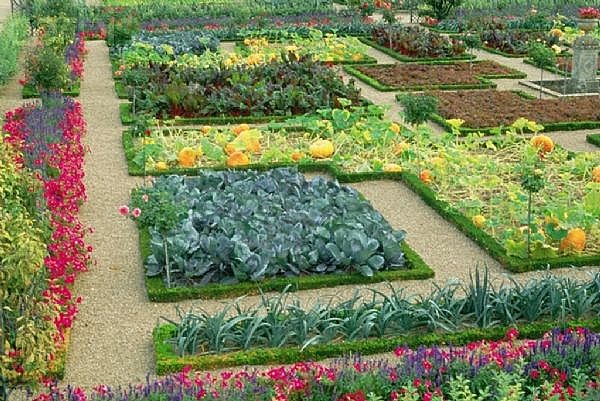
Experienced gardeners always take this factor into account, which allows them to get higher yields. In order not to get confused in the "five acres", it is worth drawing a plan for your garden for the coming summer and an approximate planting plan for next year, observing the correct order of alternating vegetable crops.
Cabbage
It is impossible to plant cabbage and other cruciferous plants (radish, radish) in the same place earlier than in 2-3 years. White cabbage is best placed after potatoes, tomatoes, onions; planting after beans, peas, carrots and beets is acceptable.
Potato
The best predecessors for potatoes are cabbage and various root crops. A bad predecessor for potatoes is a tomato, since these crops have common pests and pathogens. Growing potatoes in the same place should not be earlier than -3.
cucumbers

For cucumbers, you should look for a new place every year. They are placed after cauliflower and early white cabbage. You can also grow them after tomatoes, potatoes, peas and beets.
Tomatoes
According to the rules of agricultural technology, it is impossible to grow tomatoes after potatoes, since, we repeat, the diseases and pests of these crops are the same. Good predecessors for tomatoes are cauliflower and early white cabbage, pumpkin and legumes, root crops and onions are acceptable.
If you plant tomatoes in the same place every year, then the soil in this area becomes acidic, so every autumn, for deep digging of the soil, you need to add fluffy lime in small quantities (from 50 to 100 g per 1 sq.m.), so how tomatoes grow better on neutral soils (pH 6.5-7).

Growing beets in one place should be carried out no more than once every three to four years. Beets grow well after cucumbers, zucchini, squash, early cabbage, tomatoes, early potatoes, legumes. It is undesirable to plant beets after vegetables from the haze family (chard, spinach, beets again).
Onion

In one place, onions should not be planted for more than three to four years in a row. The best predecessors of onions are crops that were subjected to large doses of organic fertilizers, as well as cucumbers, zucchini and pumpkin, cabbage, tomatoes, and potatoes. On heavy clay soils, onions will not give a good harvest; they prefer light, loose, fertile soils and good lighting.
It is possible to grow garlic in one place for no more than two years, otherwise it is impossible to avoid contamination of the soil with a stem nematode.
It is better to start garlic after cucumbers, early potatoes, early cabbage and other early harvested crops (except onions).

Carrot
Sown after early potatoes, cabbage, green crops (excluding lettuce), placement after tomatoes and peas is allowed.
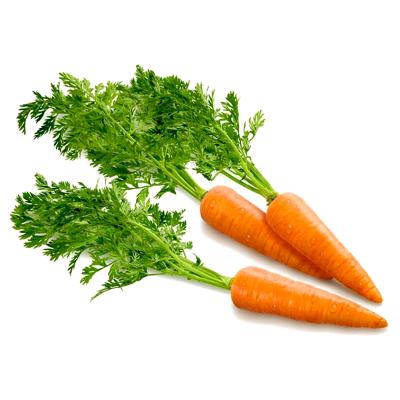
eggplant
The best predecessors for eggplant are cucumber, onion, early ripe cabbage, perennial herbs. You can not plant eggplant where potatoes, tomatoes, physalis, as well as peppers and eggplants grew last year.
strawberries
The best predecessors for strawberries: radishes, lettuce, spinach, dill, peas, beans, mustard, radish, parsley, turnips, carrots, onions, garlic, celery, and flowers (tulips, daffodils, marigolds). On poor soil, the best predecessors of strawberries are mustard, phacelia (they are also honey plants). Potatoes, tomatoes and other nightshades, as well as cucumbers, are not suitable as predecessors. After them, plots can be occupied with strawberries only after three to four years.

Strawberry
It is good to plant strawberries after radishes, beans, mustard, radishes, peas, parsley, garlic. Potatoes, tomatoes and cucumbers are of little use as predecessors. You can not place strawberries after all species of the Compositae family (sunflower, Jerusalem artichoke) and all types of buttercups.

Together is better
Many years of experience and ingenuity of gardeners suggested another correct decision - joint plantings. This is both convenient and allows you to get a large assortment vegetables. However, not all vegetables can be placed in close proximity, since not all crops favorably act on each other. This is explained by the mutual action of phytoncides and other volatile substances released by plants.

Carrot can be planted together with peas, marjoram, onions (this is even useful, since joint plantings with onions scare the carrot fly away from it). Bulb onions amicably coexists with table beets, chicory, carrots. Peas and vegetable beans get along well with potatoes, tomatoes, eggplant, cucumbers, pumpkin, melon and watermelon. TO potatoes it is quite possible to plant vegetable beans and sweet corn, to cucumber- dill and corn, radish will benefit from the neighborhood with watercress, and peas - with mustard leaf.
It has been proven that potatoes and beans, garlic and black currants have a positive effect on each other. You can make the following bed: plant parsley, lettuce, and sow garlic between them.
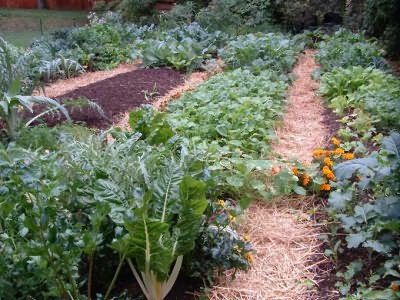
As for the unwanted neighborhood, then cannot be planted nearby potatoes and cucumbers, white cabbage, strawberries and tomatoes, tomatoes and pumpkin. If legumes are placed next to onions, both crops will be oppressed.
In addition, if the area allows, allocate a small area for the cultivation of travosiderates: clover, lupine, alfalfa and others. Thus, you will give the earth a rest, gain strength for the cultivation of vegetable crops.
As you can see, there is nothing complicated in this knowledge.
To get a variety of vegetables, you need to know some of the subtleties of growing these crops. When planting plants, it is worth planning in advance how the beds will be located. At the same time, vegetable gardeners with little experience in conquering the garden, as well as people with an impressive experience in field work, should take into account crop rotation in nature.
The same vegetable cannot always grow in the same place. The maximum period should not exceed three or four years. There are small exceptions to these rules - garden dwellers who are able to stay in the same place for a long time. These are tomatoes, beans, strawberries, potatoes, onions, parsley and dill.
Plants cultivated by man require all kinds of mineral and organic fertilizers. They have an unequal root system, are subject to various diseases. Depending on this, diverse types of vegetables are located in the neighborhood, the sequence of their planting is taken into account. It should also be borne in mind which nutrients required by horticultural crops, which this moment is in the soil.
If vegetables are affected by the same disease, they should not be planted after each other. For example, tomatoes and potatoes are susceptible to late blight. If tomatoes are planted the next year after this root crop, or vice versa, then this disease will be transmitted to the crop. Same story with weeds. Some vegetables with their green mass inhibit weeds, while others cannot compete with grass, it grows, drowning out useful crops. This factor should also be taken into account when drawing up the order of landing.
The consumption of the amount of nutrients in different vegetable plants is not the same: some need more of them, others less. Keep in mind that each culture requires vitamins and minerals according to its vital activity. If you plant vegetables in a row that need a high content of nutrients, then the earth will be depleted after them. This must be taken into account when choosing the next crops planted in the beds.
Zucchini is a very popular vegetable among useful crops grown by summer residents. It is very resistant to diseases, after the end of its fruiting, the land is not exposed to adverse effects. Therefore, after this vegetable, you can plant many other useful and tasty crops:
- beets, carrots, radishes;
- tomatoes of different varieties;
- peas, beans, beans;
- onion garlic;
- sweet peppers, eggplants feel great in the beds after zucchini;
- potatoes and cabbage will have excellent harvests;
- greens (spinach, celery, lettuce) and herbs (basil, mint, coriander).
There are special tables on the Internet that make it easy to find out what and why to plant in the beds. Let them be a hint for growing vegetables and help you to collect only high yields. Do not forget that before planting any crop, the soil must be prepared, fertilized and watered.
The zucchini, popular with gardeners, takes priority in planting in vegetable gardens and garden plots. This is easily explained by the nutritional properties and simple agricultural practices of growing vegetables. Having harvested, experienced gardeners, understanding the effectiveness of adhering to the correct crop rotation, think about what can be planted next year after zucchini in a sunny, well-fertilized place where zucchini grew?
Zucchini is a vegetable that, after harvesting, does not leave negative consequences for soil. Therefore, the range of plants that are planted in the used area after the harvest of this vegetable is quite wide. Experienced gardeners have long tested various plants for the annual circulation in their beds.
If you do not know how to properly plan the planting of vegetables on your site, then study the information from a special table.
The most popular plants that actively develop and bear fruit in the area where zucchini was previously grown include:
Onions and garlic, which, due to their properties, disinfect the soil;
different kinds legumes, in particular peas: they not only give a high yield in these areas, but also enrich the soil with nitrogen;
vegetables from the nightshade family, in particular tomatoes, including the most demanding soil indicators - cherry tomatoes;
root vegetables: radishes, beets, carrots.

The key to the success of each owner is a well-thought-out crop rotation. A good harvest will please the gardener and reward him for hard work if he uses decades of experience and technology.
Traditionally, before the start of the season, it is necessary to brush up on the basic principles of crop rotation on the site and strictly adhere to them. Usually the plant is planted in the place where it grew, no earlier than four years later, and at this time the site is planted with other types of vegetables. This rule also applies to zucchini. Experienced gardeners often plant potatoes or tomatoes after zucchini; vegetables that are susceptible to infection from infected land. Since zucchini is resistant to pests, the soil remains "clean" after them and contains enough nutrients to get a good harvest of other crops.

After that, it is best to plant zucchini in the garden for the next year, is it possible to plant them in the same place? Simonov A.
The principle of crop rotation involves changing the plants planted in the beds from year to year, so that the next harvest will please, and not bring disappointment. Planting vegetables after "relatives" is a deliberate guarantee of a bad result. What culture should precede zucchini? The answer is in this article.
Let's be friends with families!
The basic rule: zucchini is not loved in the predecessors of representatives of the pumpkin family (cucumbers, squash, pumpkins, melons). They take from the top layer of the earth the same nutrients that zucchini require for development. The earth "gets tired", accumulates compounds in itself that harm the growth and normal fruiting of zucchini and. If “relatives” are planted in the chosen place for several years, then the yields will become minimal, and the gardener will have to deal much more actively with viral infections and pests.

In order for the harvest of zucchini to please, it is necessary to choose the right predecessors for them
Advice. After harvesting any crops, it is better to sow the beds with green manure (mustard, winter rye, alfalfa, clover, phacelia, rapeseed). Either before snow falls with mowing and incorporation, or in the spring, along with plowing, organic residues will be mixed with the soil. This process will heal the earth, saturate it with organic matter, make it looser, and help get rid of pathogenic microflora. So the selection of desirable predecessors for zucchini will become less critical.
As a previous crop for zucchini, experienced gardeners recommend using:
- Cruciferous family: whole range of cabbage, radish, turnip, horseradish.
- Legume family: beans, bush and curly beans, peas, lentils, chickpeas, soybeans.
- Onion family: turnip onion, garlic,.
- Nightshade family: tomato, pepper, physalis, potato.
- Aster family (compositae): all varieties of leaf and head lettuce, tarragon.
- The haze family: spinach, chard.
- Umbrella family: carrots, dill, coriander, anise, cumin, parsnips and parsley grown for digging up roots.

Influential vegetables: cabbage, tomato, peas
Different garden crops have a different effect on the subsequent crop of zucchini. Its degree depends on the needs of the previous "inhabitants" of the garden for nutrition, minerals and the methods of agricultural technology used.
- Cabbage. Well-rotted organic matter is introduced under it, and constant loosening and hilling structure the soil for further settlers.
- Tomatoes. The powerful root system of the plant and regular top dressing make the earth looser, richer. Tomatoes take the most phosphorus from the soil, potassium in smaller volumes, and zucchini needs nitrogen for best development. Therefore, the tomato, as a predecessor, will leave more nitrogen compounds for subsequent plantings.
- Members of the legume family. Thanks to root nodules, they enrich the soil, accumulate the nitrogen required for zucchini.

Cabbage is good as a precursor for zucchini
Advice. An excellent reminder to a gardener who is experimenting with different crops at their summer cottage will be a vegetable compatibility plate. It can indicate good and bad predecessors, successful neighbors, as well as planting patterns by year.
Having fixed the location of the zucchini on paper this season, and putting the drawing into the "country" notebook, next year you can not be afraid to confuse the beds. In winter, a summer resident who is not busy with chores in the garden will have the opportunity in advance, anticipating the pleasure of the coming harvest, to plan the upcoming plantings.

If you plant zucchini after tomatoes, it will provide them with nitrogen
As a last resort, if the gardener doubts whether it is possible or not recommended to plant zucchini after certain vegetables, it is better to use the rule from Russian folk tale"tops-roots". That is, in one place in the first year, plant what gives results underground, and in the second - what bears fruit on the above-ground part. Of course, not forgetting about dosed top dressing and pre-planting addition of fertilizers to the soil.
Joint cultivation of zucchini and corn - video
It is impossible to imagine a table without zucchini dishes in the summer season. This simple vegetable fills the diet, as it can be used to prepare a variety of dishes. Everyone who has his own garden tries to grow healthy fruits on his own. It is important for gardeners to know and observe some subtleties when planting in order to get a rich harvest. One of them is then, after which plant zucchini.
Short description
Zucchini is an annual crop from Initially, like their progenitors, these vegetables were known as creeping bush plants. Now the cultivation of bush varieties is practiced more.
Bush. It has five-pointed leaves placed on elongated petioles. A rather plentiful herbaceous mass is able to protect the root from premature drying.
Leaves. They leave the impression of a creative masterpiece. Many bush varieties have whitish patterns on a green leaf background.
Flowers. Different-sex bluebells densely inhabit the bush and are characterized by their yellow color.
Root. Spreading surface type system. Adnexal processes are located on the sides of the lateral roots.
Some properties of zucchini
The main feature of zucchini is that they are very easily absorbed by the body. They contain potassium, iron and a whole complex of vitamins. Thanks to their properties, zucchini is a suitable food for babies.
In order to successfully grow nutritious vegetables such as zucchini, you need to take into account some of the nuances. The potential of the future crop is laid down when it is planted.
What is important to know when planting zucchini
The area where the zucchini will grow should be accessible to sunlight and protected from drafts.
Light soils are best suited. Therefore, humus, straw and crushed green manure are first added to it. Also, depending on the composition of the soil, ash is added to it and mineral fertilizers.
The next point is to find out, and then plant zucchini. Sometimes gardeners cannot understand the reason for a poor harvest. It would seem that the place is suitable, and the soil is fertile, but the return is unimportant. It turns out that the culture that had previously grown in the garden played a role.
Some already know such a thing as crop rotation. It is increasingly affecting the gardening industry.
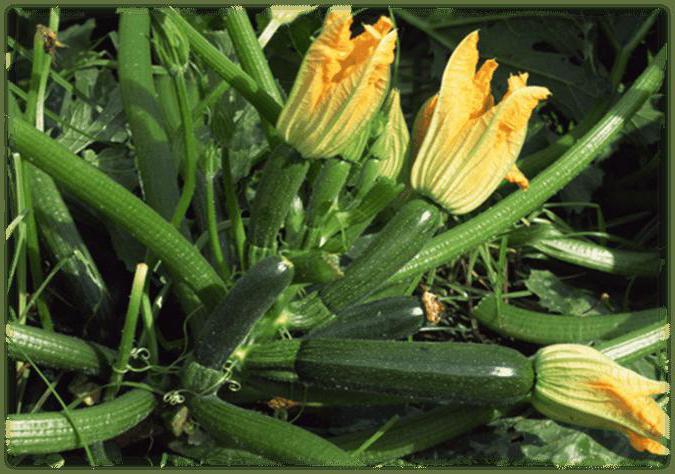
What is crop rotation
Crop rotation is the alternation of planting crops in the same area. This method is scientifically justified, in particular, it is used on a large scale in the fields. Some garden lovers in practice could observe how crop rotation has a positive effect on the harvest.
The method in question does not happen randomly. Each plant has its predecessors. To determine after which crops you can plant zucchini, you should be guided by a number of factors:
- Plants have an individual need for consumption chemical elements from the soil. Each successive cultivation of a crop changes its composition.
- The natural structure of the soil layer for plants is of great importance. Also, the level of digging can be different. Sometimes, in order to decide which crop to plant zucchini after, additional work on the soil will help resolve this issue.
- Pay attention to the biological characteristics of plants. This includes tolerance to weedy areas and common pests.
- In order to save money, crops with fast ripening periods are grown.

Benefits of crop rotation
The purpose of this process is to get the most generous return from the garden or suburban area. Competent approach to sequential landings different cultures will help you see all the benefits of this method. These include:
- Reducing the number of diseases in plants. After harvesting, each culture leaves behind pathogenic bacteria that are inherent, in particular, in its family. It can be late blight in tomatoes or root rot in cucumbers. If such vegetables are planted again next year, they will begin to hurt even more, because pathogens will find a suitable haven for themselves. Moving the culture to another place will not contribute to the further development of the disease, and it will feel better in the new site.
- Help with pest control. Certain types of insects living in the garden have their favorite vegetables. For example, some species of ants eat up the roots of early cabbage. Alternating places for plants sometimes confuses pests. They are not always able to orient themselves while bushes or plant fruits are developing.
- Improvement of soil composition. Plants absorb nutrients from different soil layers, depending on the structure of the root system. Therefore, crop rotation does not allow depleting the land.
To get abundant fruiting of zucchini, it is important to pay attention to their similarities and differences with other plants.

By what criteria to choose a predecessor for zucchini
There are 3 main points here:
- Root depth.
- Absorption of specific elements for nutrition.
- Pests and diseases.
After what crop to plant zucchini
This is where the principle of the untired earth comes into play. If vegetables were grown last year that did not particularly need those substances that zucchini needs, then the return for the latter will be generous. Below are some of the best options for such a landing.
- Experienced farmers plant zucchini after cabbage and are satisfied. This is partly due to the fact that in cabbage the root goes deeper into the soil than in zucchini. It absorbs nutrients from a deeper layer, thus leaving food for future settlers.
- Plant zucchini and after tomatoes. Their root system is powerful and branched. Developing, it well structures the soil and prepares it for the next plant. Tomatoes are not very demanding on nitrogen, but they absorb potassium and especially phosphorus well. Zucchini love nitrogen, as they need to build up a thick green mass. Before fruiting, they, like many other garden crops, are fed with phosphorus.
- Planting zucchini after blue ones is recommended for the same reasons as after tomatoes, since they belong to the same family. But there is a special advantage here. Eggplants are very responsive to organic and complex mineral fertilizers. Experienced gardeners take good care of these top dressings, and this guarantees a high yield of the next crop that will grow in their place.
- Legumes always serve as excellent predecessors of those plants that are not indifferent to nitrogen. Therefore, after which it would be appropriate to plant zucchini, it is after peas and beans. During their stay in the place allotted for them, they accumulate a lot of nitrogen, which is required by zucchini.
- Is it possible to plant zucchini after potatoes, mainly depends on the preparation of the soil. During the growing season, potatoes absorb quite a lot of phosphorus and potassium. After harvesting, it is necessary to replace the stock of the necessary elements. Basically, this culture is an excellent predecessor, as it belongs to the nightshade family. After all the crops belonging to this family, it is important to remove the tops in order to protect the future crop from diseases. It is also noteworthy that potatoes form their fruits underground, and zucchini on the surface. This is one of the facets of crop rotation.
- It is believed that onions do not harm the future fruiting of zucchini. It can serve as a precursor to one season. Onions are planted on greens in early spring, and before the time of planting zucchini, they are already plucked.
- An excellent option for zucchini is the previous cultivation of carrots. She doesn't need in large numbers nitrogen and does not deplete the surface layer of the earth. Its roots find their nourishment in a deeper layer. In experienced gardeners, the soil for carrots is usually well structured and enriched with phosphorus and potassium. Superphosphate and ash are usually added under it.

The best predecessor
As you can see, in order to successfully grow a pumpkin culture, there is a wide choice of predecessors. This fact facilitates planting planning and gives the gardener freedom of choice. From the list of all favorable plants, one can single out something after which it is better to plant zucchini. These include peas and beans. Why can you say so?
Legumes noticeably structure the soil and accumulate nutrients. During vegetation, nitrogen reserves are formed on their roots. They also have the ability to convert complex forms of phosphorus into available for plant nutrition.
Cultures from the legume family are sown in order to improve the soil. They help in the fight against the nematode. Planting zucchini after peas or beans is a guaranteed protection against root rot.
What vegetables are bad predecessors of zucchini
As already mentioned, each plant absorbs nutrients at the appropriate level of the soil layer. If every year the same crop is planted in the same place, then the land will no longer justify itself.
Based on the foregoing, it becomes clear, after which you can not plant zucchini. These are primarily related plants. These include pumpkins and melons. They have the same root system, similar diseases and are affected by the same pests.
Some summer residents have a question about cucumbers: is it possible to plant zucchini after them. The fact is that not everyone knows that the cucumber belongs to the pumpkin family. At first glance, it is different appearance. But for experienced gardeners, it is no secret that it is often affected by powdery mildew, root rot and spider mites. These diseases are also characteristic of zucchini. Yes, and in its structure, the cucumber betrays its belonging to pumpkin cultures.

Is it possible to plant zucchini after zucchini
From the available information, it can be said unequivocally - no. But many experienced farmers may object. It happens that on very fertile land, abundant crops grow for several years in a row on the same allotted plot. Do not forget that the way the plants are rotated lays the potential for subsequent years. Sooner or later, the soil will still be impoverished. This is an important factor for those who are going to use their garden for a long time.
It is easy to plan the planting of vegetables for gardeners who have a large land plot where you can roam. In this case, you can move crops from year to year at your discretion. But what about summer residents with a small plot? Once they have already chosen suitable places for the vegetables they want to grow, and changing their place is a problem.
Exists alternative way, in which you can plant zucchini after zucchini without transferring them to another place. We are talking about plants that are planted in the intervals between planting the main crops. More on this later.
The most convenient predecessor
A unique predecessor is green manure. Siderates are plants that are rapidly gaining green mass. They have very long and branched roots that go several meters deep.
If you sow healing plants for several years in a row in one place, you can improve the quality of the soil. Small root processes rot and make the earth loose and light.
The green mass is cut off and left on the surface. It enriches the soil with essential nutrients.
Green manure crops are convenient for crop rotation because they need to be cut before flowering. The gardener thus benefits from the siderates themselves, at the same time, the plants alternate in a short time.
It is important to know that you can not plant a crop after green manure from the same family.
A suitable option for zucchini is phacelia. It can be sown after harvesting zucchini and left into the winter. Dry bushes trap snow and contribute to the accumulation of moisture. Sow this predecessor again in early spring. Before flowering, cut off and leave to overheat, then plant zucchini in open ground.
Green manure plants include: mustard, lupine, spring rapeseed, rye, clover, oats, phacelia and peas.
With the use of green manure, the question of whether it is possible to plant zucchini after zucchini is exhausted. It is also optional to use the method of alternating vegetables.

How to plant zucchini
Seminal. Seeds are planted in open ground. To guarantee seedlings, it is better to prepare them.
Take 1 tablespoon of ash for half a glass of water. Insist a little and lower the zucchini seeds there. After they are soaked, transfer them to cheesecloth and place in a warm place. When the seeds swell or sprout, they are planted in the ground.
Some gardeners produce seed hardening. For half a day they are placed in the refrigerator, and then in a warm place, and so on several times.
For the soil method of growing zucchini, the soil is prepared in the fall. Add superphosphate and wood ash. Before digging, humus or compost is laid out. In the spring, holes are prepared with a depth of 6 cm. If additional fertilizers are applied, they can be deepened more. The distance will depend on the crop variety. Between curly zucchini leave 1 meter, between bush 70 cm. Seeds are placed in wells with a margin. After germination, weaker plants are removed and left 1 pc.
Rassadny. This method is practiced to obtain an early harvest. They buy ready-made soil and lay it out in peat cups. Many prepare the soil themselves. It should be predominantly peaty. Additionally, it is diluted with humus and sawdust. In this case, the soil is disinfected with boiling water or a manganese solution.
Seeds are planted close to the surface and cover the glasses with a transparent material. Then they are left in a warm place.
After the appearance of sprouts, peat pots are opened and placed in a cooler place.
Moderately watered and fed with special fertilizers for seedlings. A month later, they are planted in prepared holes.
Conclusion
Knowing what to plant zucchini after, many lovers of summer cottages and their own gardens will no longer refuse to grow this unpretentious plant. And if you consider what useful properties pumpkin crops have and how pleasant they taste, then it's worth it.


